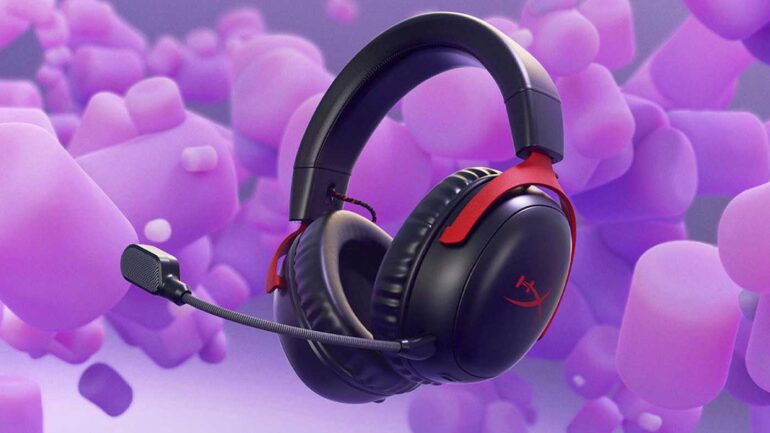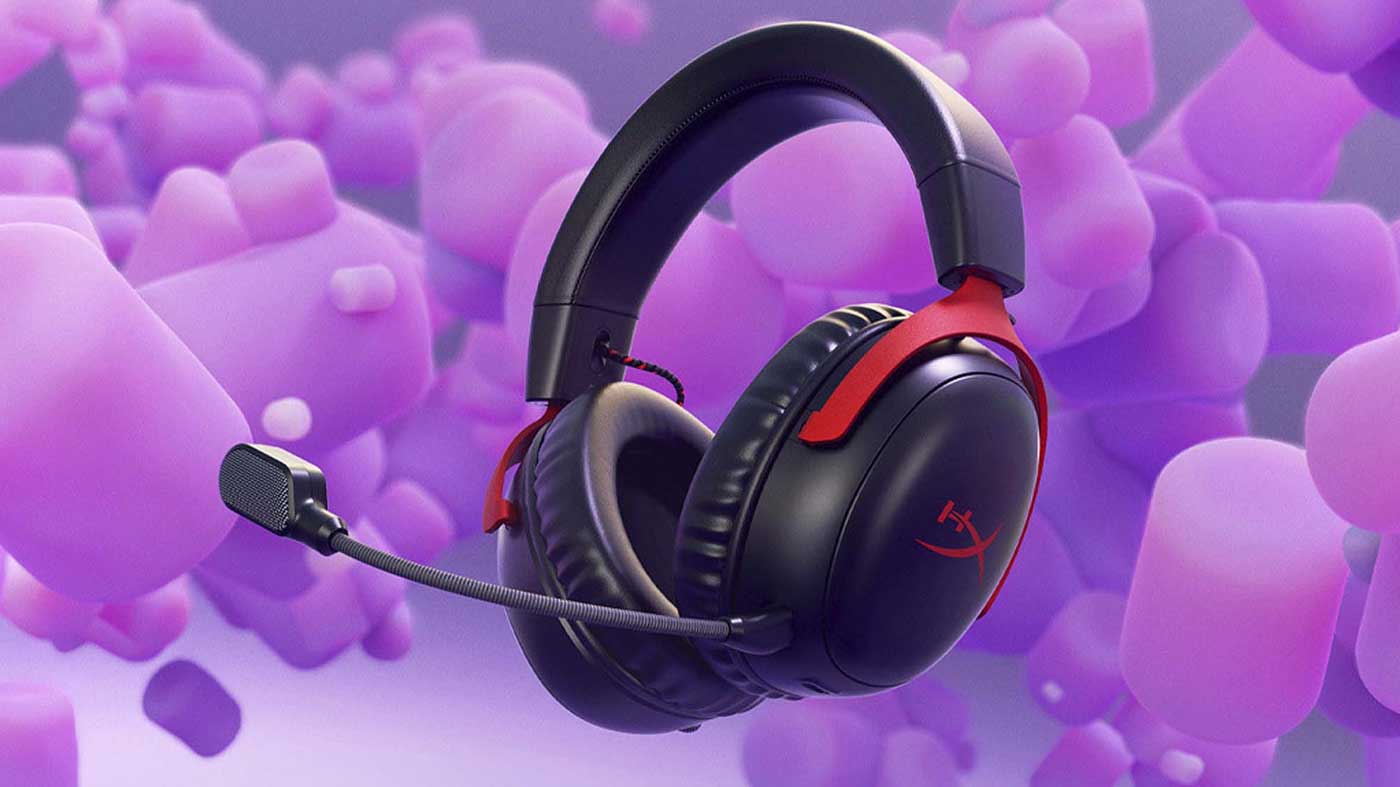When I reviewed the Cloud III, HyperX’s follow-up to one of gaming’s most iconic headsets, back in May I called it “the new mid-range king” thanks to a fantastic balance of price, build and sound quality that continued the Cloud II’s established legacy while giving it a slightly more modern look and pushing the audio experience just enough to make it worthy upgrade. Now, HyperX is launching a wireless version of the Cloud III and I’ve been taking it for a spin. To cut a long story (and a long cable) short – it’s the same great headset but wireless. Who’d have thought?
A lot of the below review echoes or outright rehashes my review of the HyperX Cloud III, with respective differences to the connectivity and introduction of a battery. What you get in the box is slightly different as well with the removal of the 3.5mm audio cable and USB adapter and the inclusion of a USB-C wireless dongle (with a USB-A adapter included) as well as a USB-C charging cable.
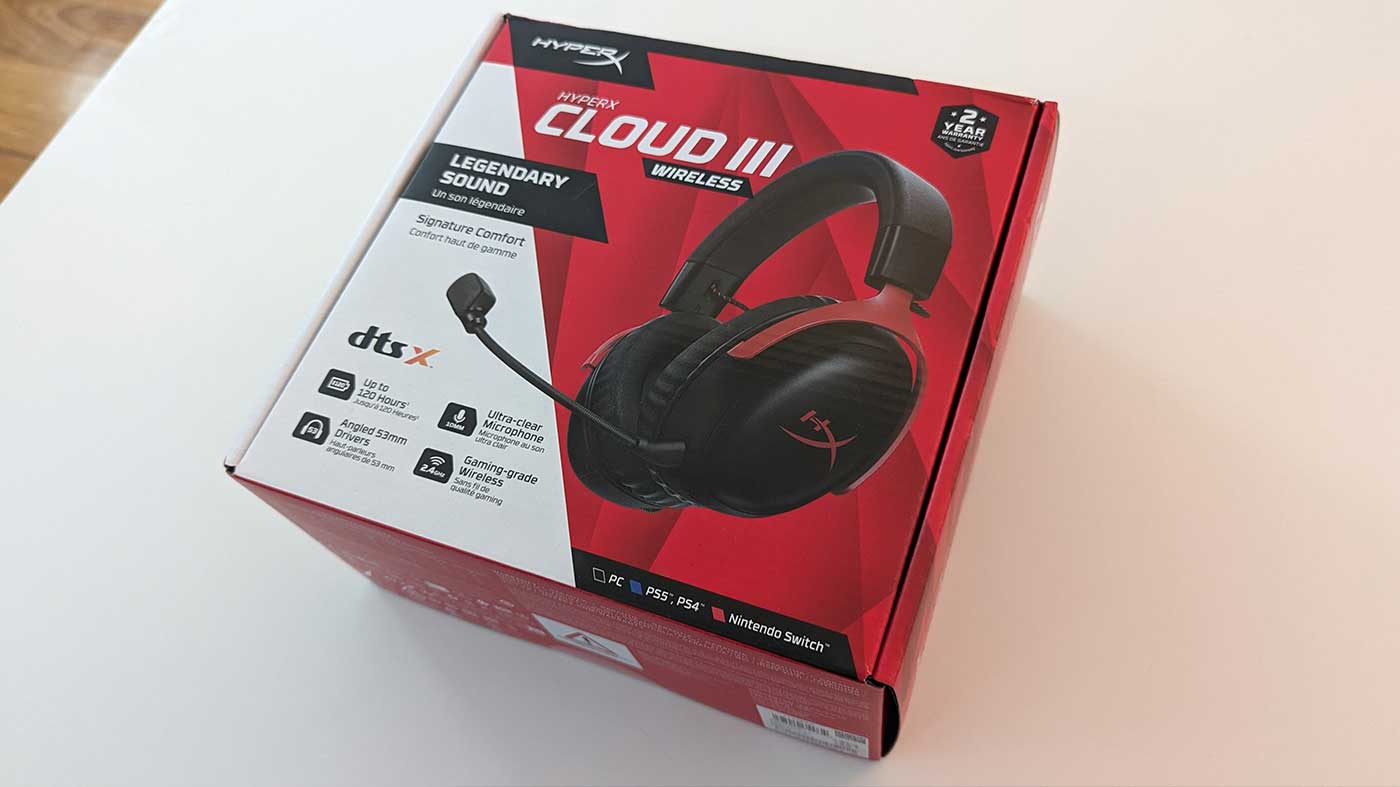
Like its wired counterpart, the Cloud III Wireless takes the same recognisable HyperX Cloud form factor and gives it a bit of a modern refresh. Using similar materials throughout, it retains the rough size and construction of the Cloud II and Cloud II Wireless with their red, metallic arms but with slightly more rounded and sleek lines. The band and ear cushions are still using memory foam and leatherette material and while leatherette isn’t my first choice for these things it’s in keeping with tradition and noticeably softer than before. The microphone no longer wears a foam hat, but instead has a built-in mesh filter and comes with a handy LED mute indicator. A very basic combo of a volume scroll and a quick mute button embellish the cups on either side, and a power button now sits where the wired Cloud III’s audio cable once plugged in.
All told, it’s a great little modernisation of the Cloud II’s look without completely sacrificing the existing visual identity. Importantly, it’s also still incredibly comfortable – much more so than the vast majority of other gaming headsets in its price class or even above. I’m someone whose ears heat up quite quickly, and I’ve always appreciated a good breathable fabric in that regard, but in terms of pure on-the-head fit and the comfort of the big, plush cups these are so good that the material feels like a non-issue. The Cloud III wireless is about 10% heavier than the wired version at around 330g, but I’ve barely noticed the difference in use and the clamping pressure of both versions remains a bang-on balance between secure fit and comfort for me.
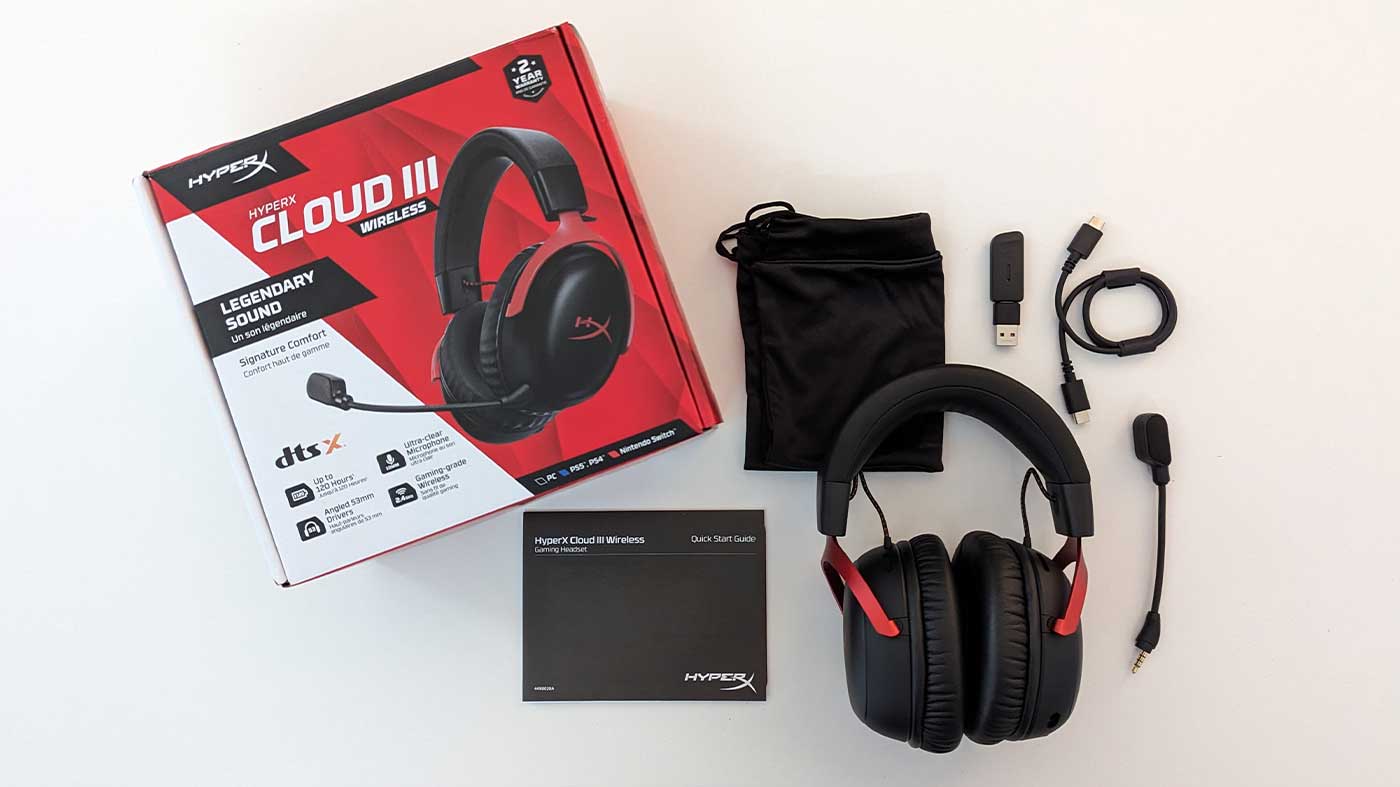
When it comes to audio quality, the Cloud III Wireless is again pretty much a match for its wired counterpart, sporting the same improved, angled 53mm drivers and feature set including DTS Headphone: X Spatial Audio. Like the regular Cloud III, it sports the same balance and fantastic soundstage that made the Cloud II so good for competitive PC gaming while pushing the overall audio experience to make it a great choice for those flashy, cinematic single-player blockbusters as well.
Even if you’re not using the headset with a PC and getting DTS:X Spatial Audio there’s a very nice width and depth from the Cloud III Wireless that makes it a great option for something like a console, but it’s definitely good to have the option to further tweak the audio experience on Windows with the (admittedly fairly basic) HyperX NGENUITY software. NGENUITY doesn’t really stand up to some of the fancier software solutions from brands like SteelSeries or Razer, but luckily the headset sounds fantastic out-of-the-box which makes it a great multiplatform option – especially given this new wireless iteration connects via a 2.4GHz USB-C dongle that means it’ll work with a range of modern devices. It doesn’t feature any other connection options though, like Bluetooth, which is a touch disappointing.

The microphone on the Cloud III Wireless is again the same as the regular Cloud III, improving on the Cloud II’s mic by going from a 6mm diameter to 10mm and offering “improved clarity” according to HyperX. It’s still a pretty standard headset mic among other pretty standard headset mics, but for the average person speaking with an inside voice it comes through nice and clear and actually does a pretty decent job of not picking up a lot of background noise. I was able to chat with friends with a TV going right near me and none of it bled into my comms, which is good. I tried shouting for a bit (sorry, pals) and it seems to blow out pretty easily at a raised volume but your mileage there will vary depending on how obnoxious you are.
One thing that obviously does differ in the wireless version of the HyperX Cloud III is the need for a battery, and despite this headset only being around 30g heavier than the wired version it manages to advertise a whopping 120-hour battery life. I haven’t managed to drain my battery yet but I’ve used it pretty consistently for the last week or so, I reckon 40ish hours of use, and the software tells me I’m at 60% charge so I’d call that close enough. I do listen quite loud and I’ve left it idle a lot so any discrepancy there is more likely on my part than a stretch of the truth from HyperX.
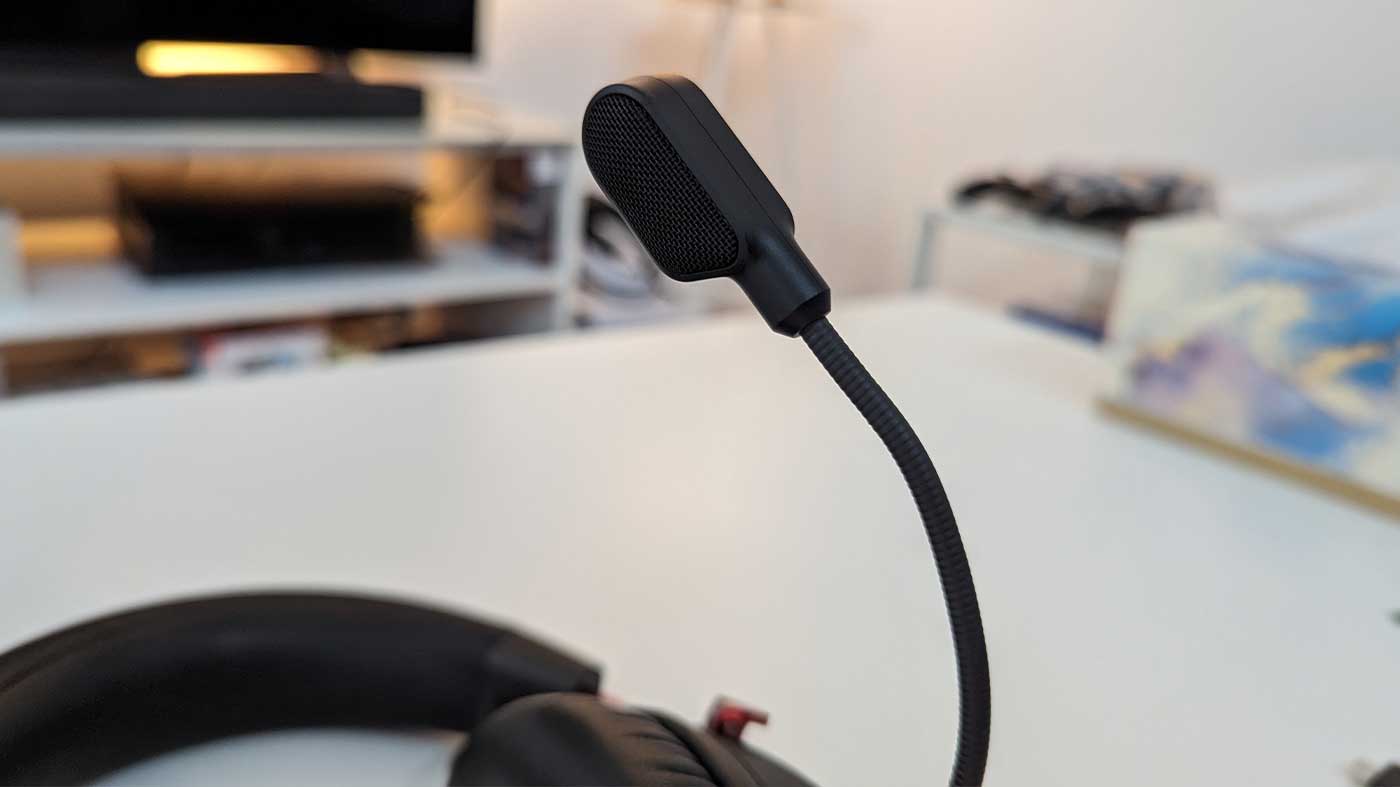
At $279 AUD when it launches in Australia on September 8th, the HyperX Cloud III Wireless carries a good $120 premium over the wired version without adding any other value besides the lack of a cord. Compared to other wireless gaming headsets on the market it’s still a winner in most regards, and easy to recommend for competitive gamers with its great positional audio and battery life that won’t let you down mid-match, but it doesn’t quite feel as premium as $279 would suggest and if you don’t absolutely need a wireless solution you can just as easily go for the $159 AUD wired Cloud III for mostly the same experience.


